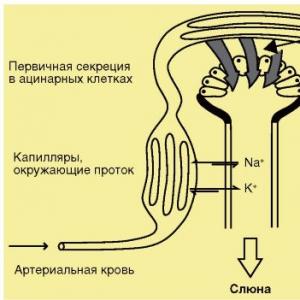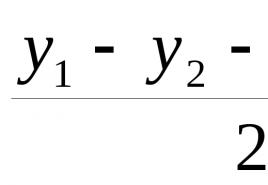A planet that rotates clockwise. Ten interesting facts about Venus
Planet Venus interesting facts. Some you may already know, others should be completely new to you. So read on and learn new interesting facts about the "morning star".

Earth and Venus are very similar in size and mass, and they revolve around the Sun in very similar orbits. Its size is only 650 km less than the size of the Earth, and its mass is 81.5% of the Earth's mass.
But that's where the similarities end. The atmosphere is 96.5% carbon dioxide, and the greenhouse effect raises temperatures up to 461 ° C.
2. The planet can be so bright that it casts shadows.
Only the Sun and Moon are brighter than Venus. Its brightness can range from -3.8 to -4.6 magnitudes, but it is always brighter than the brightest stars in the sky.
3. Hostile atmosphere

The mass of the atmosphere is 93 times that of the Earth's atmosphere. The surface pressure is 92 times that of the Earth. It is like diving a kilometer under the surface of the ocean.
4. It rotates in the opposite direction compared to other planets.
Venus rotates very slowly, the day is 243 Earth days. Even stranger, it rotates in the opposite direction compared to all other planets in the solar system. All planets rotate in a counterclockwise direction. Except for the heroine of our article. It rotates clockwise.
5. Many spacecraft have managed to land on its surface.

In the midst of the space race, the Soviet Union launched the Venus series of spacecraft and some successfully landed on its surface.
Venera 8 was the first spacecraft to land on the surface and transmit photographs to Earth.
6. People are used to thinking that there are "tropics" on the second planet from the Sun.

While we sent the first spacecraft to study Venus from close range, no one really knew what was hidden below the thick clouds of the planet. Science fiction writers dreamed of a lush tropical jungle. The hellish temperature and dense atmosphere surprised everyone.
7. The planet has no satellites.
Venus looks like our twin. Unlike Earth, it has no moons. Mars has moons, and even Pluto has moons. But she ... no.
8. The planet has phases.

Although it looks like a very bright star in the sky, if you can look at it with a telescope, you will see something different. When looking at it through a telescope, you can see that the planet goes through phases like the moon. When it is closer, it looks like a thin crescent moon. And at the maximum distance from the Earth, it becomes dull and in the form of a circle.
9. There are very few craters on its surface.

While the surfaces of Mercury, Mars and the Moon are littered with impact craters, there are relatively few craters on the surface of Venus. Planetary scientists believe that its surface is only 500 million years old. Constant volcanic activity smooths out and removes any impact craters.
10. The last ship to explore Venus is the Venus Express.

Venus is the second planet of the solar system. Its neighbors are Mercury and Earth. The planet was named after the Roman goddess of love and beauty - Venus. However, it soon turned out that the planet's surface has nothing to do with the beautiful surface.
Knowledge about this celestial body was very scarce until the middle of the 20th century due to dense clouds hiding Venus from the view of telescopes. However, with the development of technical capabilities, mankind learned many new and interesting facts about this amazing planet. Many of them have raised a series of questions that have so far been unanswered.
Today we will discuss hypotheses that explain why Venus rotates counterclockwise, and tell interesting facts about it, known to planetary science today.
What do we know about Venus?

In the 60s, scientists still had a glimmer of hope that the conditions for living organisms. These hopes and ideas were embodied in their works by science fiction writers who told about the planet as a tropical paradise.
However, after the spaceships were sent to the planet, the scientists who provided the first idea about them came to disappointing conclusions.
Venus is not only uninhabitable, it has a very aggressive atmosphere that destroyed several of the first spaceships sent into its orbit. But despite the fact that communication with them was lost, the researchers still managed to get an idea of \u200b\u200bthe chemical composition of the planet's atmosphere and its surface.
Also, researchers were interested in the question of why Venus rotates counterclockwise, just like Uranus.
Twin planet
Today it is known that Venus and Earth are very similar in physical characteristics. Both of them belong to the terrestrial group of planets like Mars and Mercury. These four planets have few or no satellites, have a weak magnetic field, and lack a ring system.
Venus and Earth have a similar mass and are only slightly inferior to our Earth), and also rotate in similar orbits. However, this is where the similarities end. The rest of the planet is in no way like Earth.
The atmosphere on Venus is very aggressive and is 95% carbon dioxide. The planet's temperature is absolutely unsuitable for life, as it reaches 475 ° C. In addition, the planet has a very high pressure (92 times higher than on Earth), which will crush a person if he suddenly decides to walk on its surface. They will destroy all living things and clouds of sulfur dioxide, creating precipitation from sulfuric acid. The layer of these clouds reaches 20 km. Despite its poetic name, the planet is a hellish place.
What is the speed of rotation of Venus around its axis? As it turned out as a result of research, one Venusian day is equal to 243 Earth days. The planet rotates at a speed of only 6.5 km / h (for comparison, the speed of rotation of our Earth is 1670 km / h). Moreover, one Venusian year is 224 Earth days.
Why does Venus rotate counterclockwise?

This question has been of concern to scientists for more than a decade. However, until now no one has been able to answer it. There have been many hypotheses, but none of them has yet been confirmed. Nevertheless, we will consider a few of the most popular and interesting ones.
The fact is that if you look at the planets of the solar system from above, Venus rotates counterclockwise, while all other celestial bodies (except Uranus) rotate clockwise. These include not only planets, but also asteroids and comets.
When viewed from the north pole, Uranus and Venus rotate clockwise, while all other celestial bodies rotate against it.
Reasons for counterclockwise rotation of Venus

However, what caused this deviation from the norm? Why does Venus rotate counterclockwise? There are several popular hypotheses.
- Once upon a time, at the dawn of the formation of our solar system, there were no planets around the sun. There was only one disk of gas and dust, which rotated clockwise, which eventually passed on to other planets. A similar rotation was observed for Venus. Soon, however, the planet likely collided with a huge body that crashed into it against its rotation. Thus, the space object seemed to "launch" the movement of Venus in the opposite direction. Perhaps Mercury is to blame for this. This is one of the most interesting theories, which explains several surprising facts at once. At one time, Mercury was probably a satellite of Venus. However, he later collided with it tangentially, giving Venus part of its mass. He himself flew into a lower orbit around the Sun. That is why its orbit has a curved line, and Venus rotates in the opposite direction.
- Venus can be rotated by the atmosphere. Its layer width reaches 20 km. Moreover, its mass is slightly less than the earth's. The density of Venus's atmosphere is very high and literally squeezes the planet. Perhaps it is the dense atmosphere that rotates the planet in a different direction, which explains why it rotates so slowly - only 6.5 km / h.
- Other scientists, observing how Venus rotates around its axis, came to the conclusion that the planet is turned upside down. It continues to move in the same direction as the other planets, but due to its position it rotates in the other direction. Scientists believe that a similar phenomenon could have been caused by the influence of the Sun, which caused strong gravitational tides, combined with friction between the mantle and the core of Venus itself.
Conclusion
Venus is a terrestrial planet, unique in nature. The reason it spins in the opposite direction is still a mystery to humanity. Perhaps someday we will solve it. In the meantime, we can only build assumptions and hypotheses.
We have been studying the solar system for hundreds of years, and one would assume that we have the answers to all the frequently asked questions about it. Why the planets rotate, why they are in such orbits, why the Moon does not fall to the Earth ... But we cannot boast of this. To verify this, just look at our neighbor, Venus.
Scientists began to study it closely in the middle of the last century, and at first it seemed relatively dull and uninteresting. However, it soon became clear that this is the most natural hell with acid rain, which also rotates in the opposite direction! More than half a century has passed since then. We learned a lot about the climate of Venus, but we still have not been able to understand why it does not rotate like everyone else. Although there are many hypotheses on this score.
In astronomy, rotation in the opposite direction is called retrograde. Since the entire solar system was formed from one rotating gas cloud, all the planets move in orbits in the same direction - counterclockwise, if you look at this whole picture from above, from the side of the North Pole of the Earth. In addition, these celestial bodies revolve around their own axis - also counterclockwise. But this does not apply to the two planets of our system - Venus and Uranus.
Uranus actually lies on its side, most likely due to a couple of collisions with large objects. Venus rotates clockwise, and this is even more problematic to explain. One of the early hypotheses suggested that Venus collided with an asteroid, and the impact was so strong that the planet began to spin in the other direction. This theory was thrown into the discussion of the interested public in 1965 by two astronomers who processed radar data. Moreover, the definition "thrown in" is in no way humiliation. As the scientists themselves stated, the quote: “This possibility is dictated only by the imagination. It is hardly possible to get evidence to support it. " Extremely convincing, isn't it? Be that as it may, this hypothesis does not stand up to the test of simple mathematics - it turns out that an object that is large enough to reverse the rotation of Venus will simply destroy the planet. Its kinetic energy will be 10,000 times more than it takes to smash the planet into dust. In this regard, the hypothesis was sent to the distant shelves of scientific libraries.
It was replaced by several theories based on some kind of evidence base. One of the most popular, proposed in 1970, suggested that Venus rotated in this way originally. It's just that at some point in her story, she turned upside down! This could be due to the processes taking place inside Venus and in its atmosphere.

This planet, like the Earth, is multi-layered. It also has a core, mantle and crust. During the rotation of the planet, the core and mantle experience friction in the area of \u200b\u200btheir contact. Venus has a very thick atmosphere, and thanks to the heat and the attraction of the Sun, it is exposed, like the rest of the planet, to the tidal effects of our star. According to the described hypothesis, friction of the crust with the mantle, coupled with atmospheric tidal fluctuations, created a torque, and Venus, having lost stability, toppled over. Simulations have shown that this could only happen if Venus had an axis tilt of about 90 degrees since its formation. Later, this number decreased slightly. In any case, this is an extremely unusual hypothesis. Imagine a tumbling planet! This is some kind of circus, not space.

In 1964, a hypothesis was put forward, according to which Venus changed its rotation gradually - it slowed down, stopped, began to spin in the other direction. This could have been triggered by several factors, including interactions with the sun's magnetic field, atmospheric tides, or a combination of forces. The atmosphere of Venus, according to this theory, turned in the other direction of the first. This created an effort that first slowed Venus down and then spun back retrograde. As a bonus, this hypothesis also explains the long duration of the day on the planet.

In the dispute between the last two explanations, there is no clear favorite yet. To understand which of them to give preference, we must know much more about the dynamics of early Venus, in particular about the speed of its rotation and the tilt of the axis. According to an article published in 2001 in the journal Nature, Venus is more likely to overturn if it had a large initial rotational speed. But, if it was less than one revolution in 96 hours with a small axial tilt (less than 70 degrees), the second hypothesis looks more plausible. Unfortunately, it is quite difficult for scientists to look back four billion years. Therefore, until we invent a time machine or conduct unrealistically high-quality computer simulations, progress in this matter is not expected.

It is clear that this is not a complete description of the debate regarding the rotation of Venus. So, for example, not so long ago the very first of the hypotheses described by us received an unexpected development - the one that comes from 1965. In 2008, it was suggested that our neighbor could have turned in the opposite direction while she was still a small, unreasonable planetesimal. An object approximately the same size as Venus itself should have crashed into it. Instead of the destruction of Venus, the merger of two celestial bodies into one full-fledged planet would follow. The main difference from the original hypothesis here is that scientists may have evidence to support this turn of the situation.

According to what we know about the topography of Venus, there is very little water on it. Compared to Earth, of course. Moisture could disappear from there as a result of a catastrophic collision of cosmic bodies. That is, this hypothesis would also explain the dryness of Venus. Although there is also, as ironic as it may sound in this case, pitfalls. Water from the surface of the planet could simply evaporate under the rays of the hot sun here. To clarify this issue, a mineralogical analysis of rocks from the surface of Venus is needed. If water is present in them, the hypothesis of an early collision will disappear. The problem is that such analyzes have not yet been carried out. Venus is extremely unfriendly to the robots that we send to her. Destroys without hesitation.
Be that as it may, building an interplanetary station with a Venus rover capable of working here is still easier than a time machine. Therefore, let us not lose hope. Perhaps humanity will receive an answer to the riddle of the "wrong" rotation of Venus during our lifetime.
Venus is the brightest object in the sky. Although ancient people knew about Venus, some cultures believed that it was two separate celestial objects - the evening star and the morning star. The Greek astronomer was the first to realize that the evening and morning stars are actually one object. Many cultures have attributed to the planet a corresponding goddess of love and beauty. Venus is the Roman name for this goddess. The Babylonians called the planet Ishtar, and the Greeks called it Aphrodite.
The average distance from Venus to the Sun is 108.21 million kilometers. This is the average distance as Venus moves in an elliptical orbit around the Sun. At the closest point of its orbit, called perihelion, Venus is only 107.48 million kilometers from the Sun. And then at the farthest point in its orbit, Venus is 108.94 million kilometers from the Sun.
Venus takes 224.7 days to complete one orbit around the Sun. But it also takes 243.02 days to turn around its axis. In other words, a day on Venus is actually longer than a year on Venus. It is also strange that Venus rotates in the opposite direction compared to. Visible above the north pole, Venus is seen turning clockwise. If you could stand on the surface of Venus, you would see the Sun rising in the west, moving slowly across the sky, and setting in the east, unlike Earth.
Scientists believe that Venus is a twin because of its similarity. For example, the radius of Venus is 6,052 km; 95% of the Earth's radius. The mass of Venus is 81.5% of the mass of the Earth, and the density is 5.24 g / cm 3, while the density of the Earth is 5.51 g / cm 3. If you were standing on the surface of Venus, you would experience 90% of the gravity that you feel on Earth.
A day on Venus lasts 243 days; which is unusual given the fact that the Venus year is only 224.7 days long. In other words, a day on Venus is longer than its year. Moreover, Venus is the only planet in the Solar System that rotates clockwise around its axis. All other planets rotate counterclockwise.
Radar imaging of Venus's surface showed that it has impact craters across the planet, and evidence of widespread volcanism. smaller and almost always low shield volcanoes. It was believed that some major event changed the shape of the surface of Venus 300-500 million years ago, erasing older impact craters and volcanoes. This event also turned off the planet's plate tectonics, trapping heat within the planet. Without heat leakage, convection at the core of Venus also ceased and the planet lost its magnetic field. The interior of Venus is like Earth. The planet has a metal core surrounded by a mantle of stone and a thin crust. But unlike Earth, Venus has no plate tectonics and no carbon cycle that moves carbon out of the atmosphere and stores it inside the planet. This is one of the problems that may have led to Venus's uncontrolled greenhouse effect.
Although Venus has many similarities to Earth, it also has many differences. Perhaps the biggest difference lies in her atmosphere. The atmospheric pressure on the surface of Venus is 92 times that at sea level. In fact, you would have to dive 1 km below the ocean surface to experience the same pressure. This atmosphere is composed almost entirely of carbon dioxide, with dense clouds of sulfur dioxide. Due to the atmosphere of carbon dioxide, Venus experiences the strongest in the Solar System. The temperature on the surface of Venus is 460 ° C, no matter where you are on the planet. It's hot enough to melt lead, and she destroyed the spaceship in a matter of hours.
At one time, scientists and science fiction writers believed that the surface of Venus was tropical in nature. Some believe that belief was the only reason the Soviet Union launched a series of surface probes towards the planet. After seven missions were destroyed under pressure before they could reach the surface, Venera 8 landed and disappointed millions. Several other probes were able to land in the following years. The last one to land was the Venus Express. He arrived in April 2006 and studied the planet's surface and atmosphere until he could no longer work.
Due to its dense clouds, Venus could not be observed from Earth. Early observations showed that the planet went through phases like the Moon, demonstrating that it orbits the Sun within the Earth's orbit. But until the first observations were made by the spacecraft, astronomers did not fully understand what was under the dense clouds. Radar photographs from NASA's Magellan spacecraft mapped the entire planet, revealing a hellish world covered in rocks and ancient lava flows. Several Russian spacecraft landed on the planet's surface, staying there for only a few hours, and sent photographs from the planet's surface.
Venus is often referred to as the Morning Star because it orbits closer to the Sun than our planet. This causes Venus to appear in the western sky after sunset and before sunrise in the eastern sky. In addition, only the Sun and Moon are brighter than Venus in our night sky. Because of all this, Venus is difficult to ignore, even with the naked eye.
Venus has no moons or rings.
About Venus (Items without links are under construction)
- Interesting facts about V.
- The history of the planet V.
- The atmosphere of V.
- How far is V. from the Sun
- Distance from Earth to V.
- Planet B. for children
- What is the gravity on V.
- How to find V. in the sky
- What does V. consist of?
- Does V. have a moon?
- How did V. get her name?
- How long is a day on V.?
- Diameter B.
- Retrograde rotation B.
- Surface B.
- Symbol B.
- Temperature B.
- Does V. have rings?
- How long is a year in V.?
- Does V. have volcanoes?
- Video by V.
- Color B.
- Orbit B.
- How many moons does W. have?
- Luna and V.
- B. and Mercury
- Age V.
- Craters on V.
- Land and V.
- How hot is V.?
- Life on V.
- Mass B.
- Radius B.
- B. Compared to Earth
- Size B.
- Volume B.
- The discovery of V.
- Transit B.
- V., Morning Star
- Phases B.
- Greenhouse effect B.
- Axis B.
- Density B.
- Circumference B.
- Composition V.
- Geology V.
- The core of V.
- Interior B.
- Inside V.
- Weight per V.
- How long does it take to get to V.?
- Is there water in V.?
- Climate B.
- How big is V.?
- Companions V.
- Landings on V.
- Rotation B.
- B.
- Earth Twin
- Weather in V.
- Winds to V.
- Designation for V.
- Albedo V.
- The number of moons B.
- Clouds on V.
- Q. is the hottest planet?
- B. and Jupiter
- The closest planet to V.
- The origin of V.
- Does B. have seasons?
- Rotation period B.
- Compound B.
- Shading B.
- The sun and V.
- Retrograde V. 2009
- Retrograde V. 2010
- Who discovered V.?
- Evening Star
- How long is one orbit B around the Sun?
- When was V.?
- What color is V.?
- The length of the day on V.
- The length of the year in V.
- Why is B. hotter than Mercury?
- Why is V. so hot?
- Globus W.
- Research V.
- What is V.'s age?
- Facts about V.
- Collection of photographs by V.
- Magnetic field B.
Title of the article you read "Venus".
Is it true that venus spins counterclockwise ??? and got the best answer
Answer from Ulenspiegel [guru]
Yes it's true. And Uranus generally lies "on its side".
Answer from Glukhov Ivan[newbie]
venus rotates in the opposite direction to its orbital motion. That is, the sun rises in the west and sets in the east.
Answer from Ivan Vasilievich changes his profession[guru]
It spins venereal, of course!
Answer from Dmitry Nizyaev[guru]
It depends on which pole you are watching ... But no matter how it rotates, it is not at all surprising. And why shouldn't she, in fact, rotate in any way? Here Uranus is really amazing. It rotates completely not in the plane of its orbit, and this is a very unstable position. Strictly speaking, in the process of its formation, the planet has a chance to acquire the resulting rotation in absolutely any plane and in any direction. But if the plane of rotation of the planet does not coincide with the plane of its orbit, then tidal forces cause precession - approximately the same behavior as that of a top, whose axis is not vertical. Friction forces arise along the Coriolis arcs, and these forces gradually, turn after turn, change the direction of the axis of rotation. And the closer the plane of rotation is to the plane of the orbit, the less the Corisolis forces interfere in the process - which leads sooner or later to balancing this plane. Therefore, most of the planets orbit exactly or almost exactly in the plane of their orbit.
And Uranus rotates across! And one of two conclusions can be drawn from this: either Uranus is much younger than the rest of the planets of the system, or the plane of its rotation was accidentally so close to the perpendicular to the orbit that the Coriolis forces balance each other. Figuratively speaking, the planet found itself in such precise equilibrium that it still cannot decide which side it should fall on. A rare case, it turns out!
Answer from Nikolay Gorelov[guru]
Look at the sky. The sun scratches it clockwise, which means our Earth is counterclockwise. Then Venus rotates clockwise, that is, not like people.
Answer from 3 answers[guru]
Hello! Here is a selection of topics with answers to your question: Is it true that Venus rotates counterclockwise ???







